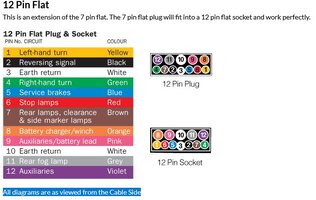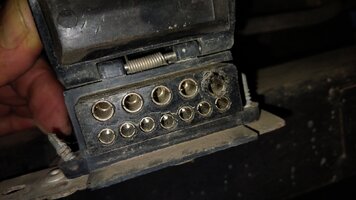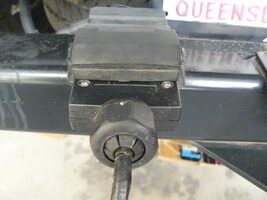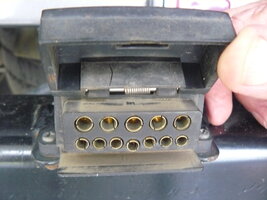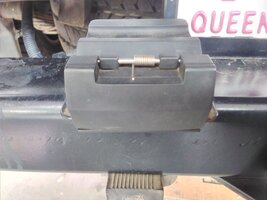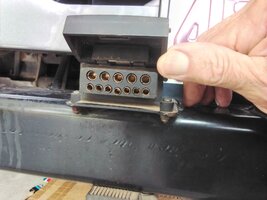Hi All, my first post!  I have a 2017 Jayco Starcraft Pop-top and I am currently using my old Falcon RTV ute to tow it (upgraded to a 2300kg towbar). I found an older copy of the Jayco 12 pin "tow vehicle wiring instructions" (how to wire the trailer socket on the tow vehicle). This came with my van.
I have a 2017 Jayco Starcraft Pop-top and I am currently using my old Falcon RTV ute to tow it (upgraded to a 2300kg towbar). I found an older copy of the Jayco 12 pin "tow vehicle wiring instructions" (how to wire the trailer socket on the tow vehicle). This came with my van.
The guide talks about using pin 2 and 3, on the socket, to provide auxiliary power (a 20A circuit) to charge the van battery (via the BMPRO J35 BMS) and pins 9 and 10 (a 30A circuit) to run the fridge whilst towing.
The original wiring in my RTV trailer socket already has a 30A circuit for pins 9 and 10. Pin 9 is +12v connected directly to the battery, via a couple of circuit breakers, (always live). Pin 10 is earthed to the "Right Centre Ground" on the ute, however the Jayco documentation says "Connect directly to vehicle battery negative terminal". The Aux battery charging circuit, where pin 3 is the Ground, says "Connect to vehicle chassis ground point. Do not connect to trailer harness ground wire. Do not connect directly to negative battery terminal". (The original wiring on my ute has pin 3 and pin 10 connected together in the trailer socket harness and then one thick wire running to the "Right Center Ground"/ chassis earth.
My questions are:
1/ given that the battery negative is connected to the chassis earth anyway, what is the difference? What possible damage could I do/ disadvantage is there, for connecting the fridge circuit back to the tow vehicle chassis rather than the battery negative?
2/ Conversely why does the 20A charging circuit use the chassis earth rather than the battery negative?
I am hoping there is someone smarter than me out there! All info appreciated.
Cheers
Gedi4
The guide talks about using pin 2 and 3, on the socket, to provide auxiliary power (a 20A circuit) to charge the van battery (via the BMPRO J35 BMS) and pins 9 and 10 (a 30A circuit) to run the fridge whilst towing.
The original wiring in my RTV trailer socket already has a 30A circuit for pins 9 and 10. Pin 9 is +12v connected directly to the battery, via a couple of circuit breakers, (always live). Pin 10 is earthed to the "Right Centre Ground" on the ute, however the Jayco documentation says "Connect directly to vehicle battery negative terminal". The Aux battery charging circuit, where pin 3 is the Ground, says "Connect to vehicle chassis ground point. Do not connect to trailer harness ground wire. Do not connect directly to negative battery terminal". (The original wiring on my ute has pin 3 and pin 10 connected together in the trailer socket harness and then one thick wire running to the "Right Center Ground"/ chassis earth.
My questions are:
1/ given that the battery negative is connected to the chassis earth anyway, what is the difference? What possible damage could I do/ disadvantage is there, for connecting the fridge circuit back to the tow vehicle chassis rather than the battery negative?
2/ Conversely why does the 20A charging circuit use the chassis earth rather than the battery negative?
I am hoping there is someone smarter than me out there! All info appreciated.
Cheers
Gedi4

